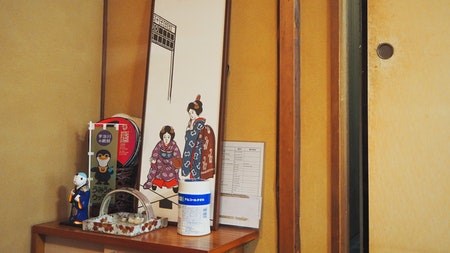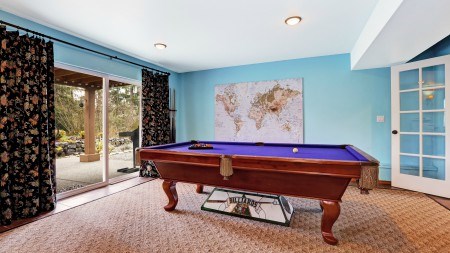As we sit contained in our homes, many of us still locked-down, isolated or working from home, we might have become more aware of the flaws around us, perhaps even felt overwhelmed by how much decoration of ‘things’ we have acquired; items that litter for they are useless, unloved or indeed loved but broken.
A cluttered home, it’s been said, reflects a cluttered mind. The more we are exposed to the un-needed or the impractical, the stuffier becomes the atmosphere; energies cannot flow or are depleted, and thus our thoughts become trapped. That’s the psychology anyway. The Japanese however have long understood that to free the mind, and through the meditative practice of Zen Buddhism, awareness and equanimity prevails, the latter defined as meaning ‘calmness and composure, especially in a difficult situation’.
All in the world are in a changing, if not difficult, situation, and it is not uncommon to find our thoughts drifting towards how to use our spaces optimally, how we are becoming more attracted to the freedom of nature, how to bring out and highlight the essence of features that surround us, and how to tap into the natural energy of the places in which we live. Inspiration comes yet again from the Japanese.
Traditional Japanese houses were designed to be smart: not only do they embrace minimalism, but are concerned with aesthetics that appreciate nature. They innovatively use space cleverly, they encourage sightlines that lead the eye into intimate, lighter, calmer realms, highlighting rather than hiding features that in a contemporary world may appear to be flawed. This concept applies to the interior features in a home.
Kintsugi
Take the art of Kintsugi for example. This centuries-old practice is best described by its translation: ‘Kin’ meaning gold, and ‘tsugi’ repair. The technique is applied to broken objects, mainly ceramics, with the use of liquid gold, or lacquer that is dusted with powdered gold. Instead of throwing away a much-loved object because it is cracked or broken, Kintsugi breathes new life into the item, and which is believed adds more value because the scars are not hidden, but highlighted. It is quite literally an acceptance of imperfection.
Wabi Sabi
Wabi Sabi takes this even further, in that it is an appreciation for the imperfect. ‘Wabi’ translates into loneliness but not negative isolated feelings, rather the sense of being connected in a pleasant way, to nature or to be without chattering society. ‘Sabi’ has its roots in being weathered, but in an elegant and rustic manner. It is also the word the Japanese use to indicate ‘rust’, which is suggestive that old and rusted should be celebrated as a cycle of change.
Shou Sugi Ban
Similarly Shou Sugi Ban, which is experiencing somewhat of a revival with the reintroduction of wood into our homes, be that for flooring or wall paneling. With Shou Sugi Ban, there is an almost a mimicking of ‘old’ by using an artisanal wood treatment practice. Japanese cedar is charred with fire before being coated with a natural oil. The wood emerges with a scorched charcoal finish, and has rot, pest and fire-resistant properties. It also repels water naturally and has an indoor and outdoor sun-shielding advantage.
Shoji
Screening is also cleverly incorporated with the use of shoji, which are movable dividers and sliding doors that separate rooms. These can be moved at whim, re-dividing rooms when needed. Built from light wood and papered, they accommodate natural light, or add tonal shadows.
Tatami and Genkan
Tatami is a floor covering. Typically tatami’s are made from rice straw, covered in softer woven rush straw and generally used throughout the entire home. An added benefit is their sweet and strong natural aroma, but this can tend to overwhelm with the heat of summer, requiring replacement over time. To ensure endurance and to protect the tatami, footwear is traditionally left at the front door, in a defined area called the Genkan, which is considered a ‘dirty’ area. It is practical because it keeps the living space clean.
Tokonoma
Extending the sense of cleanliness is the noticeable absence of clutter in traditional Japanese homes. All household accessories are removed when not in use. Instead a Tokonoma is featured. Tokonoma’s are usually reception rooms or an alcove that display paintings, ikebana flower arrangements, pottery or other artforms, and play host to candles or incense burners. This is honour heightened. It suggests we value a few simple things rather than a myriad of objects from which we can easily become overtly attached to, and which trap us in materialism and acquisition for the sake of ownership, and where we lose our sense of immodesty.
Hanami
Real value, according to part of Japanese culture, is not necessarily to be found in man-made objects but in what is naturally occurring around us. Hanami is such a practice. It is the Japanese custom of enjoying the ever-changing beauty of the short-lived cherry and plum blossoms, which serve as a reminder of the transience of life where life, death and renewal remind us to pay attention to being in the moment, for so much is fleeting.
Sensibilities redefined
As we consider our wastefulness and begin to redefine sustainability in a contemporary world, we have a greater need now for elements to perform several functions for less or more interaction and benefit yes, but from which we can also still extract enormous pleasure without being overtly extravagant or indulgent.
Our aesthetic sensibilities can being redefined if we see space, as the Japanese do, for its connectiveness. Where in bringing nature into our homes, we can tap into ancient energies that can be restorative and healing. Where we respect one another, and our ‘things’ for their place, their truth. When touch, aroma, sound and visual stimuli come together with warmth, therein lies contentment. That, in my opinion, is a triumph!




